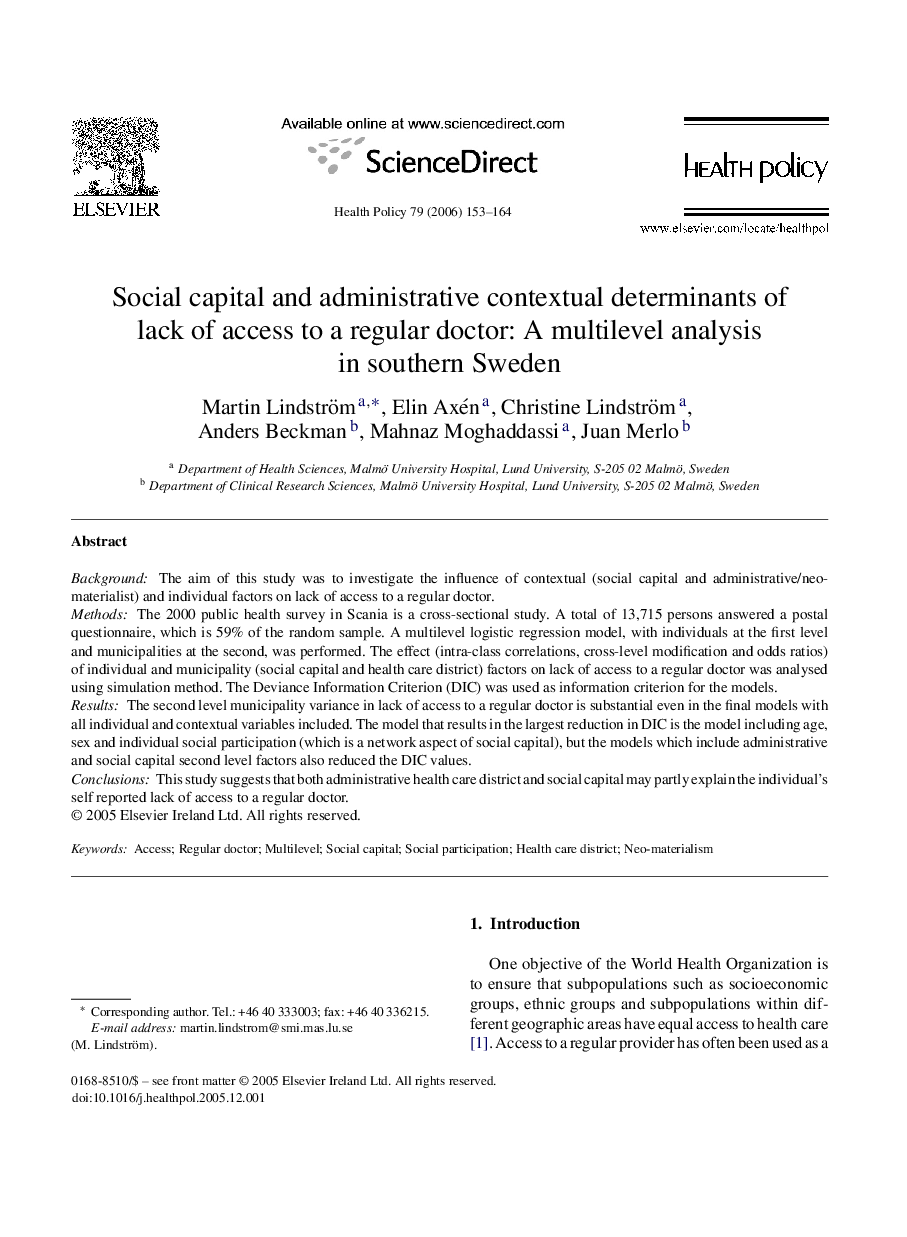| Article ID | Journal | Published Year | Pages | File Type |
|---|---|---|---|---|
| 4199166 | Health Policy | 2006 | 12 Pages |
BackgroundThe aim of this study was to investigate the influence of contextual (social capital and administrative/neo-materialist) and individual factors on lack of access to a regular doctor.MethodsThe 2000 public health survey in Scania is a cross-sectional study. A total of 13,715 persons answered a postal questionnaire, which is 59% of the random sample. A multilevel logistic regression model, with individuals at the first level and municipalities at the second, was performed. The effect (intra-class correlations, cross-level modification and odds ratios) of individual and municipality (social capital and health care district) factors on lack of access to a regular doctor was analysed using simulation method. The Deviance Information Criterion (DIC) was used as information criterion for the models.ResultsThe second level municipality variance in lack of access to a regular doctor is substantial even in the final models with all individual and contextual variables included. The model that results in the largest reduction in DIC is the model including age, sex and individual social participation (which is a network aspect of social capital), but the models which include administrative and social capital second level factors also reduced the DIC values.ConclusionsThis study suggests that both administrative health care district and social capital may partly explain the individual's self reported lack of access to a regular doctor.
